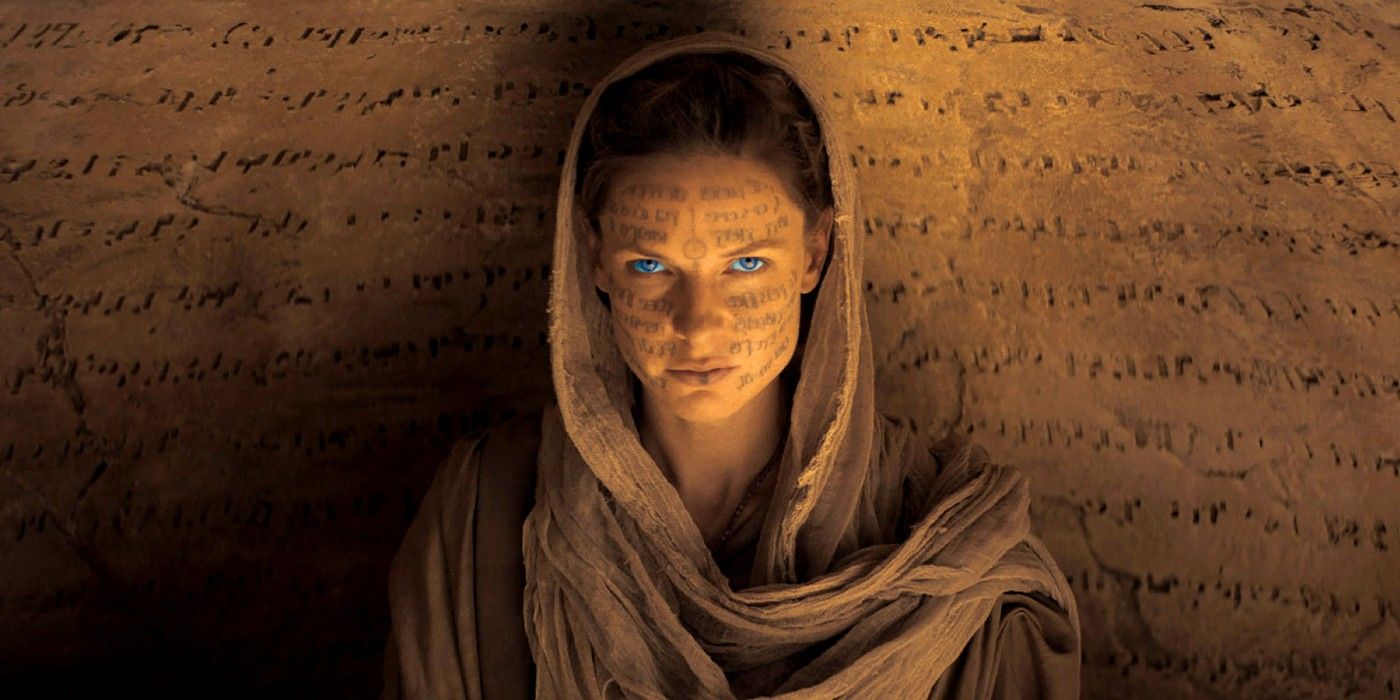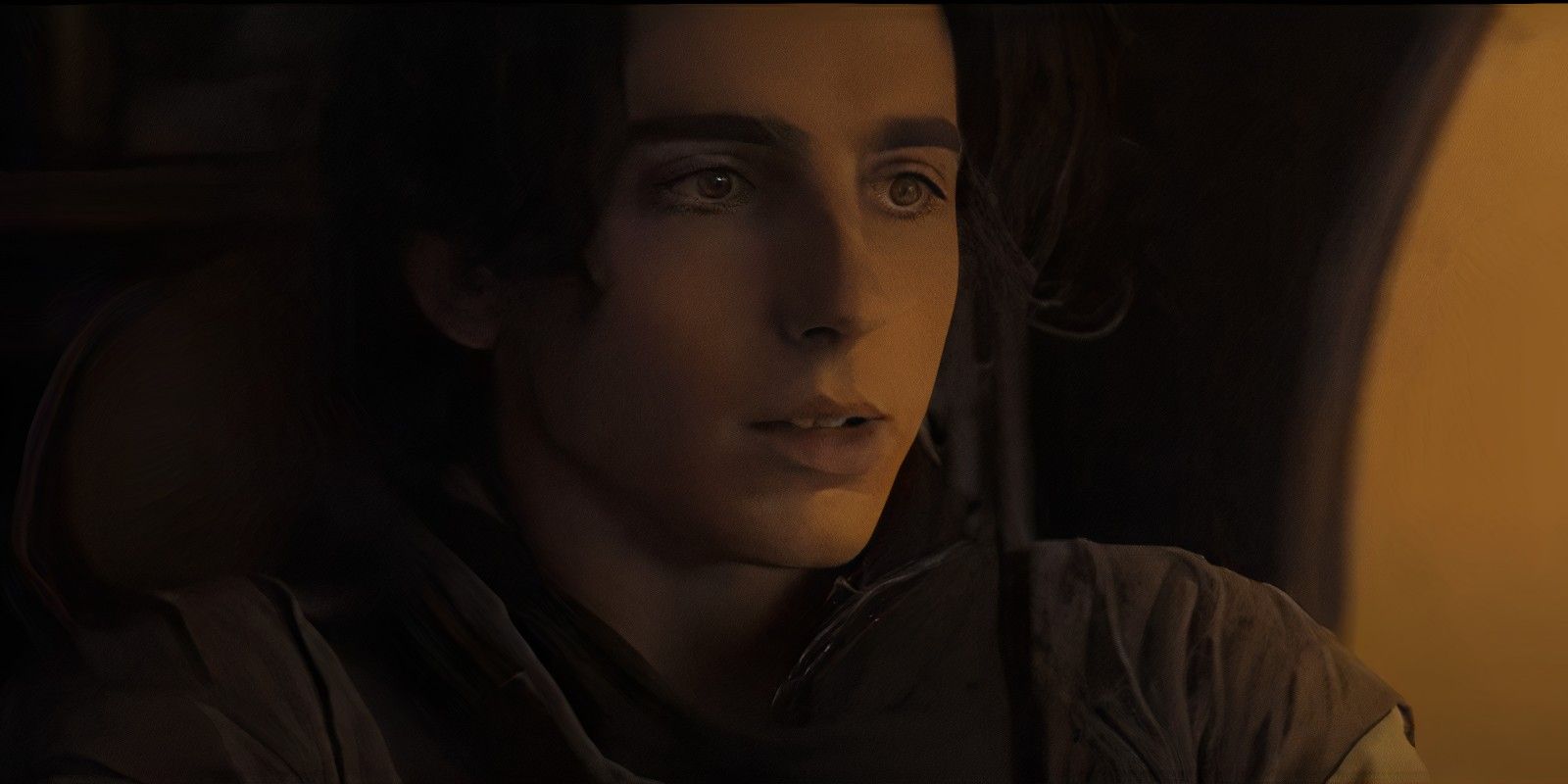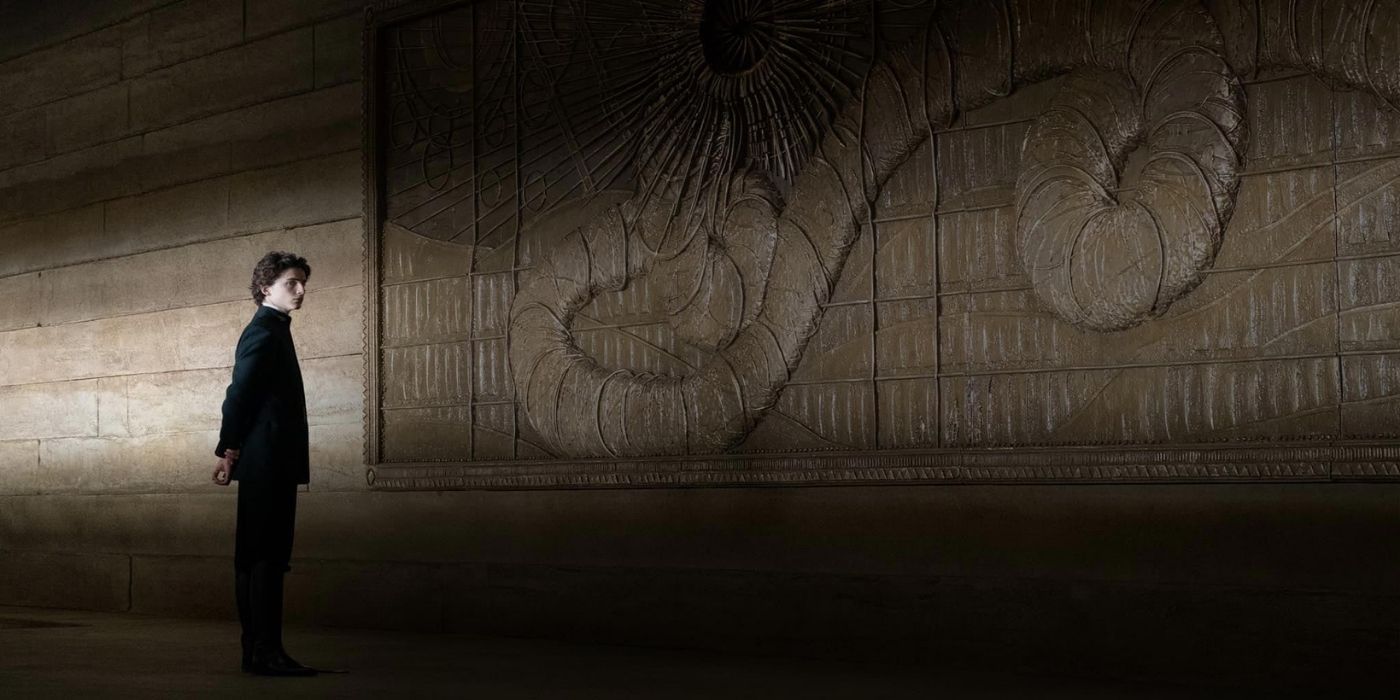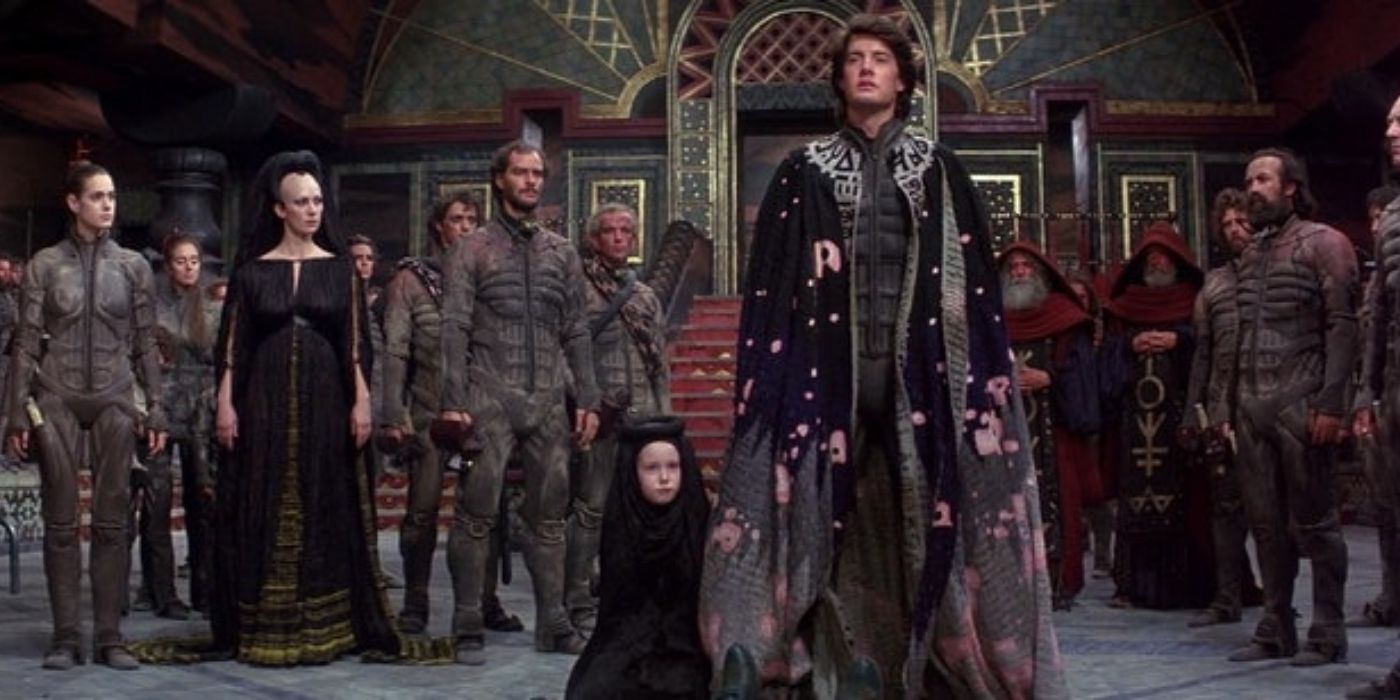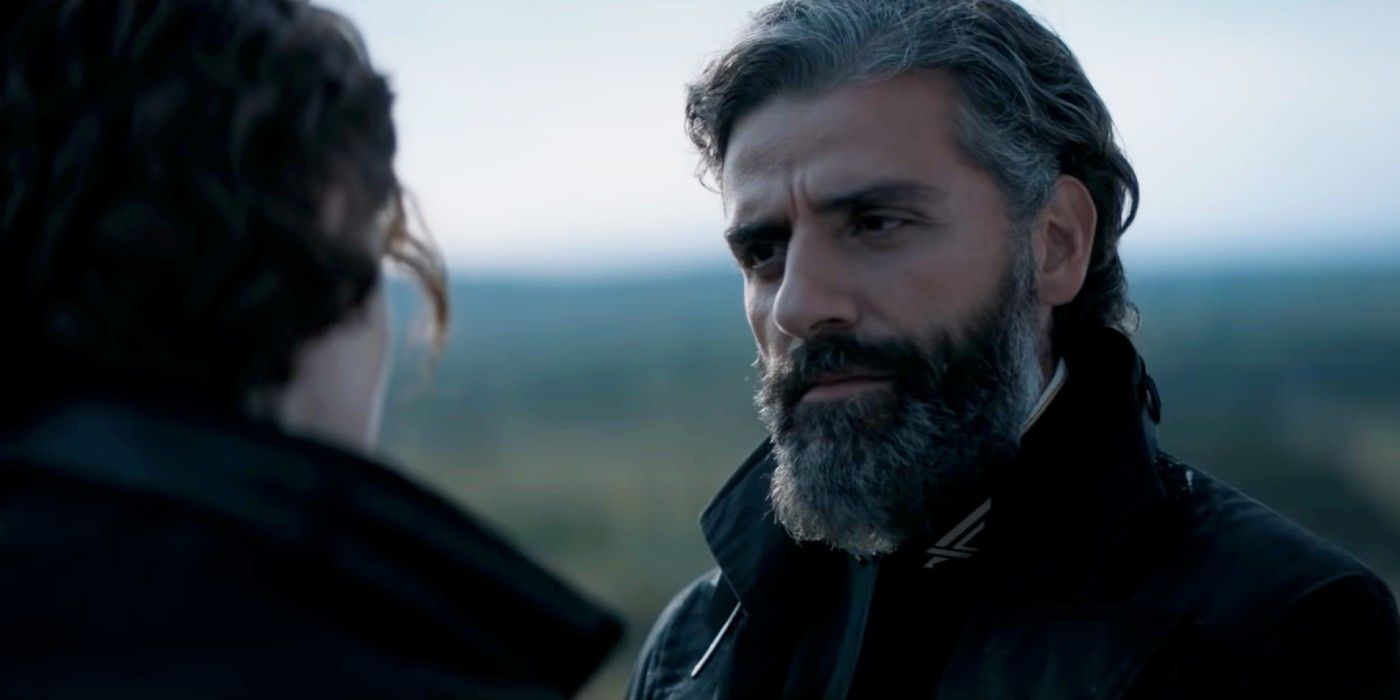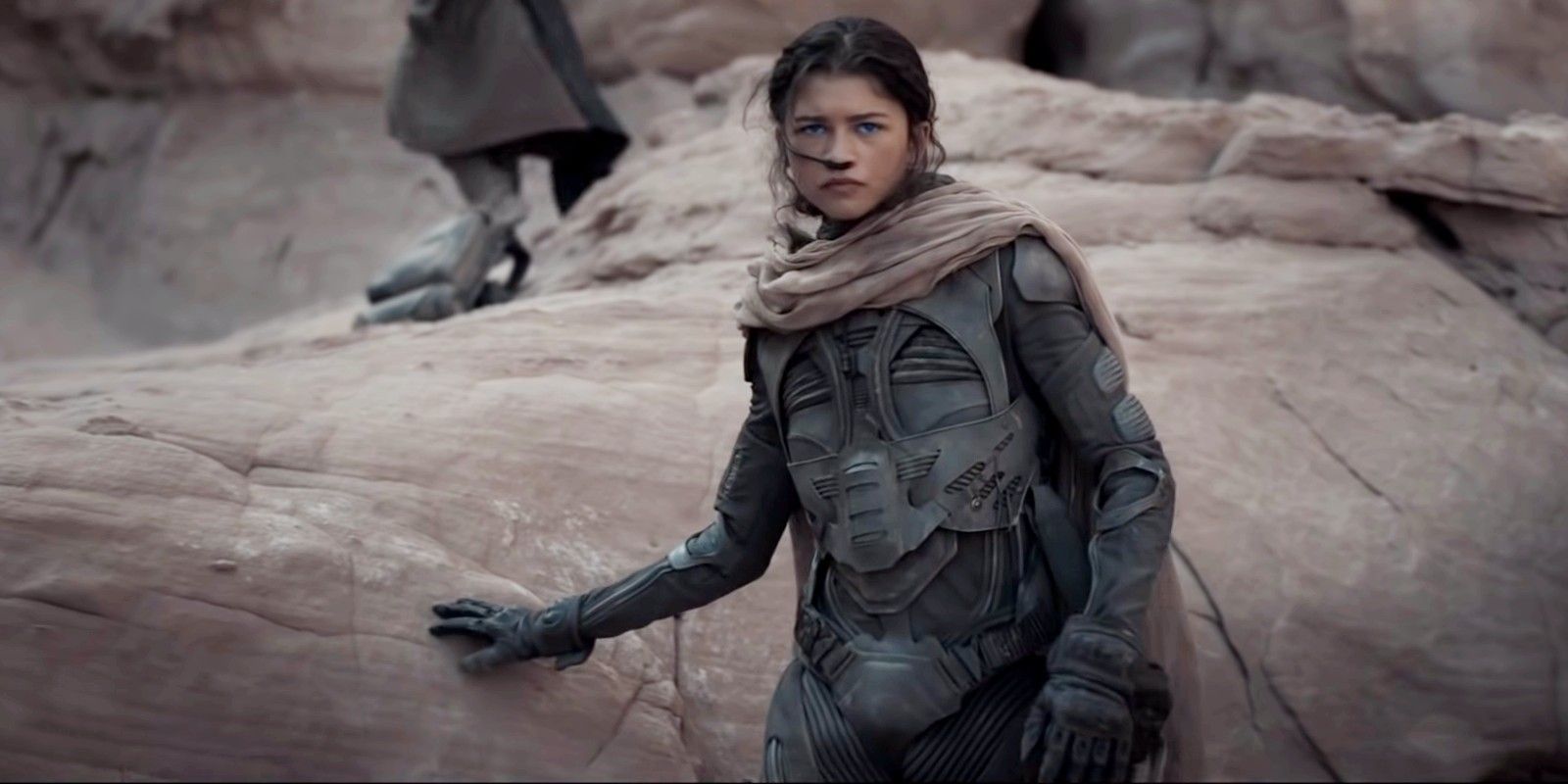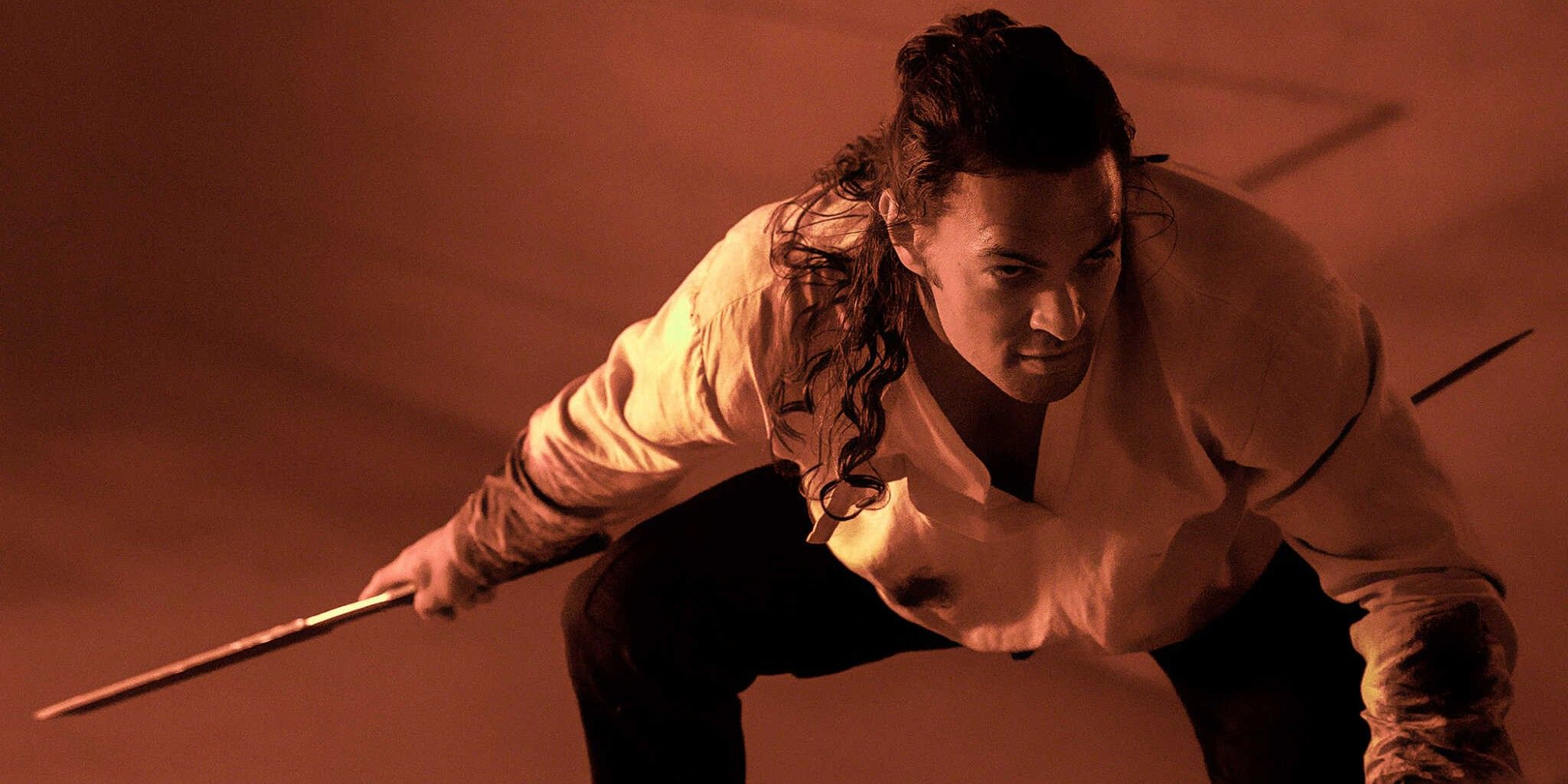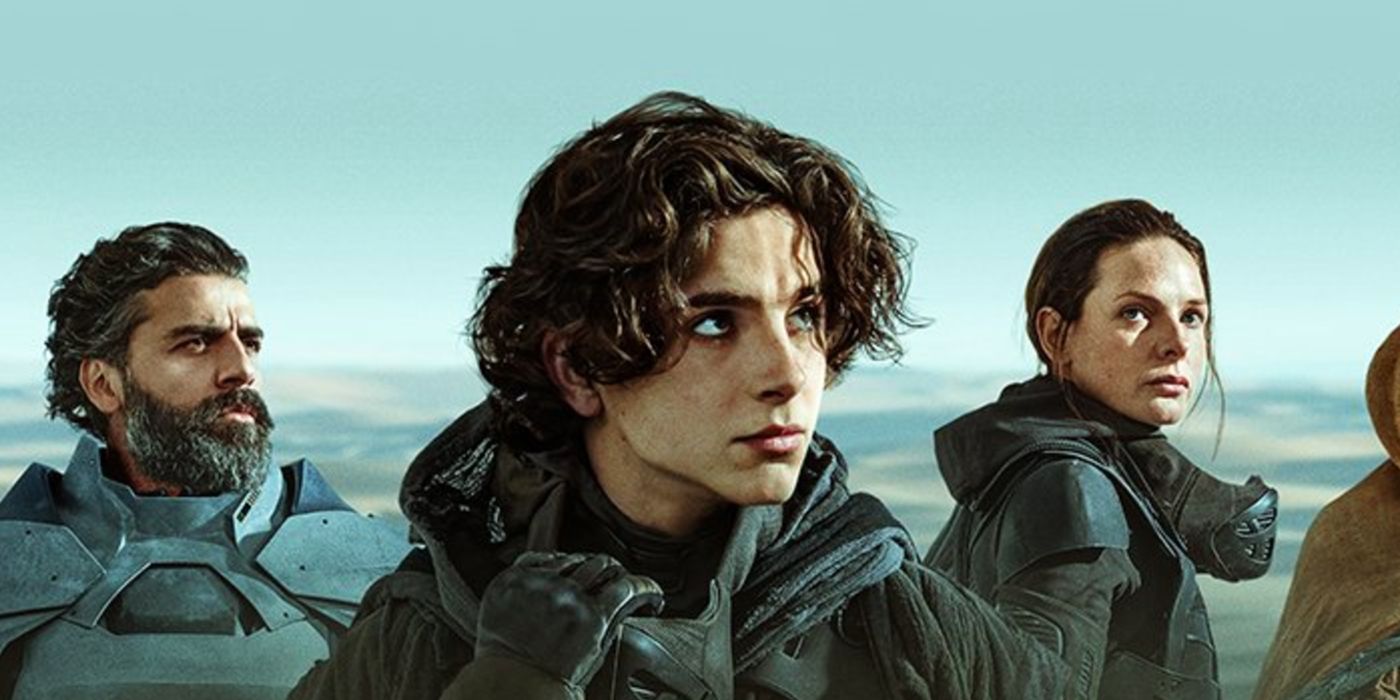10 Wildest Moments From The Book Series The Movies Can’t Show
Summary
-
Dune
is a classic space opera series known for its epic scope and bizarre world filled with colorful characters. - The big-screen adaptations of
Dune
have received mixed reviews, with some aspects of the books proving challenging to translate. - The
Dune
novels contain controversial and mind-boggling content, such as the spice orgy scene, that may not make it onto the screen.
Frank Herbert’s epic series of space opera novels began in 1965, with the first book in the series, Dune, an instant success, winning the first-ever Nebula Award for Best Novel in 1966. Dune became one of the foundations of modern sci-fi and fantasy. Herbert created a vast and bizarre world with a colorful array of characters. Since the 80s, the Dune series has been the subject of countless adaptations, with David Villeneuve’s Dune: Part One and Dune: Part Two being the most recent and successful. However, there are certain elements of the Dune books that simply wouldn’t translate well to the screen.
Everything from video games to a cult-classic adaptation of the first novel by famed director David Lynch has been released, but none of them lived up to Herbert’s classic. With the release of Denis Villeneuve’s big-screen franchise and its rave reviews from critics and fans alike, many fans of the Dune novels finally felt the epic story of Paul Atreides had been done justice on the big screen. However, with a series known for mind-boggling concepts and sometimes questionable content, including the Dune spice orgy, it’s clear not all of Herbert’s far-out vision will cross over to the Dune movies.
3:07
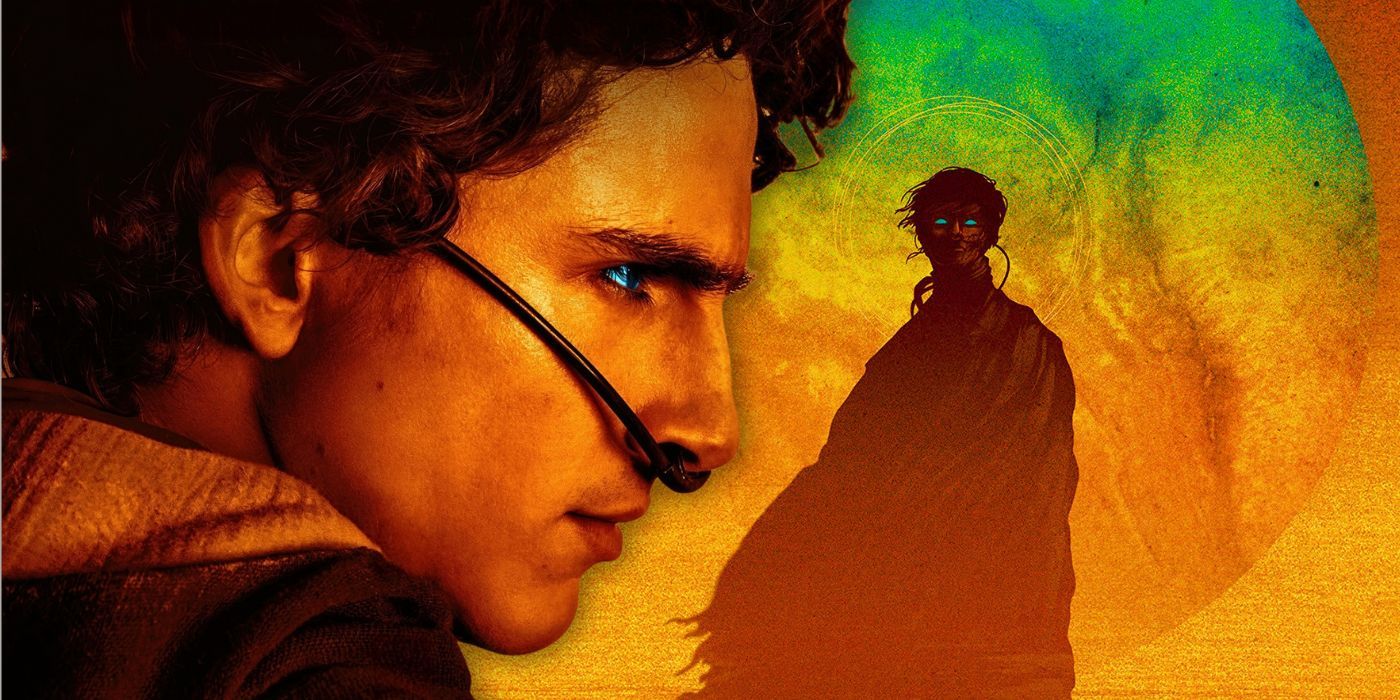
Is Paul Atreides A Villain Or A Hero? Dune 2 Settles The 59-Year-Old Debate
Dune: Part Two finally settles the 59-year-old debate over Frank Herbert’s Dune protagonist Paul Atreides — and whether he’s a villain or a hero.
10 The First Last Jedi
Will The Movies Show Paul’s Full Downfall?
With the release of 2017’s Star Wars: The Last Jedi, fans of the classic space opera were divided into two ranks. One side adored writer/director Rian Johnson’s spin on the franchise and applauded his new take on Luke Skywalker, and the other side of the fandom heralded The Last Jedi as the worst film in the Skywalker Saga. The main issue for some fans is how Luke changed from a hero with a positive outlook on life to a grizzled warrior who went into seclusion and left the galaxy to fend for itself, similar to Yoda before him.
The extreme response many
Star Wars
fans had to
The Last Jedi
may deter filmmakers from going down such a dark road for Paul.
A similar transformation occurs with Paul Atreides in Dune Messiah. After the triumphant defeat of Baron Harkonnen at the climax of the first book, readers assumed that Herbert would take his hero on further adventures that paint Paul in a positive light. Herbert instead depicted a downtrodden and hopeless man, unable to stop the violence he inadvertently created. Fans of the books might want future film adaptations to stick with Herbert’s vision, but the extreme response many Star Wars fans had to The Last Jedi may deter filmmakers from going down such a dark road for Paul.
9 The Spice Orgy
The Dune Movies Couldn’t Show This As The Book Did
Halfway through the first Dune novel, after a ceremony in which Paul’s mother drinks the poisonous Water of Life to become the new Reverend Mother for the planet of Arrakis’ native people, the Fremen, a strange and psychedelic scene ensues. Simply a celebration by the Fremen, the event is called a “spice orgy” because every person present begins to hallucinate and have their inhibitions loweredby the narcotic, LSD-inspired spice melange.
The scene itself is not overtly explicit in nature, although Herbert does mention that there is a wild frenzy of sex and dancing. Seeing as the first Dune film has a PG-13 rating, this orgy scene couldn’t be included or even really hinted at in the movie. Instead of showing the spice orgy, Dune: Part Two instead focused on Chani and Paul and offered them a more intimate moment after the event. While the spice orgy was important to the story, it wasn’t needed in the Dune movies.
8 Muad’Dib’s Holy War
Paul’s Rule Turns Into Countless Bloodshed To Innocents
Twelve years after the events of Dune, Paul rules as emperor and the messiah to the Fremen. The religious extremists who worship him have spread throughout the universe and conquered every planet, killing billions of innocents along the way. Paul is powerless to stop the holy war or to renounce the mythological godhead he has become. While Paul set out to be a good person who brought peace, he inadvertently brought more war and death, making him no better than the warlords he conquered.
Viewers might not accept seeing their hero sitting powerless as the rebellious Fremen become bloodthirsty fanatics.
There are two reasons why this massive, bloody holy war might not be included in the films. Mainly, it would take the passage of twelve years to show the true reach of the jihad’s actions, and that would never work if pressed into one film or even one montage. This time-lapse would be overwhelming for audiences, and an epic, galaxy-spanning war seems a better fit for a television series. Secondly, movie viewers might not accept seeing their hero sitting powerless as the rebellious Fremen become bloodthirsty fanatics.
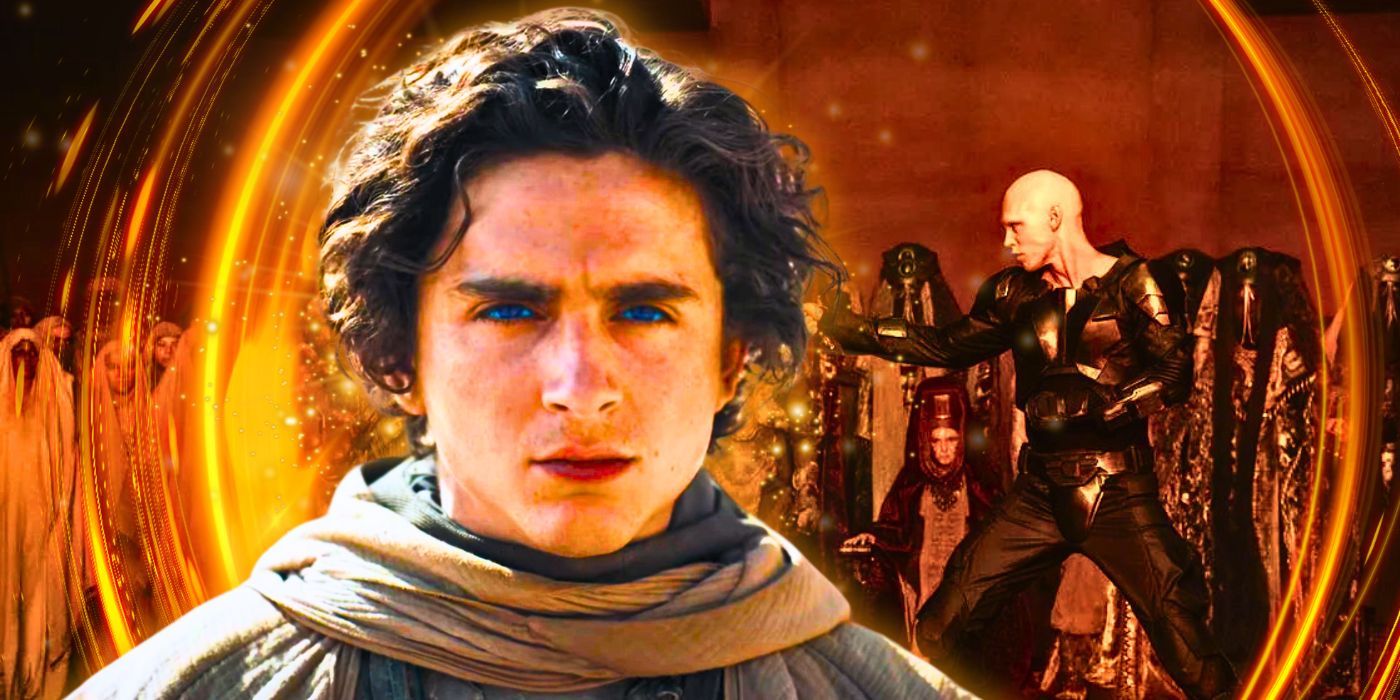
Why Paul’s War On The Houses Is A Holy War
Dune: Part Two sees Paul Atreides and his Fremen followers launching a holy war against the Great Houses. But what exactly makes it a holy war?
7 Chairdogs
Bioengineered Dog Massage Chairs
When creating a believable science fiction universe, writers must absorb the readers in their work with detailed, layered world-building. This can include creating new religions, new languages, different planets, and advances in science and/or technology. One of Herbert’s strengths as a writer is his world-building, and the universe of Dune is both fascinatingly weird and strangely familiar. One small piece of world-building will probably not be featured in upcoming film adaptations because it is too bizarre.
Introduced in the fifth book in the series, “chairdogs” are peculiar pieces of furniture that are bio-engineered dogs shaped into chairs. They are used as massage chairs for the occupant. The omission of chairdogs from the Dune movies isn’t because the concept is controversial or scandalous. Rather, it is because it is an idea that is just too strange for most moviegoers to really accept the concept without deeper explanation. Since they’re not necessary to the plot either, it makes sense that they simply aren’t included to save screen time.
6 Alia’s Training
Paul & His Sister Might Have Had A ‘Relationship’
Dune Messiah gave Paul’s pre-born sister (a child aware of their existence and previous lives while still in the womb), Alia, a defined character that readers immediately fell in love with. She was no longer the strange child that helped to thwart the Harkonnens. Instead, she was a confident, rebellious young woman who would claim the role of Regent of the Atreides Empire by the end of the novel. Dune: Chapter 2 introduces Alia, and she even shows awareness in the womb, but it starts to change her role in the story.
Through Herbert’s description of the scene, some disturbing, slightly incestuous undertones are revealed.
Whether or not Messiah will ever be fully adapted for the big screen is up in the air, but one thing fans can be certain of is the fact that one scene in the second Dune book will not be featured. In a private training room, Alia strips down naked and brutally fights a training dummy to prepare herself for close combat. Her brother Paul interrupts the training, and through Herbert’s description of the scene, some disturbing, slightly incestuous undertones are revealed.
5 Leto II Becomes a God
Paul’s Son Becomes A Mutated Creature
The children of Paul Atreides, like their Aunt Alia, are strange beings with the prescient ability to see into the future. Leto (named after Paul’s father), through his visions, discovers the Golden Path (an ideal timeline of events revealed only to the Bene Gesserit sisterhood and the hero known as the Kwisatz Haderach). Unlike his father, Leto understands the Path and the sacrifices necessary to follow it closely.
To achieve such a higher understanding of the future and time, Leto undergoes a frightening transformation. Accepting sand trout onto his body, he is slowly mutated into a sandworm/human hybrid that would fit right in with the works of directors like Guillermo del Toro. While a child turning into an enemy of their father is nothing new, the idea here to turn Leto II into a godlike worm-like being is something that might seem way out of place on the big screen, even in a giant science fiction epic.
3:21
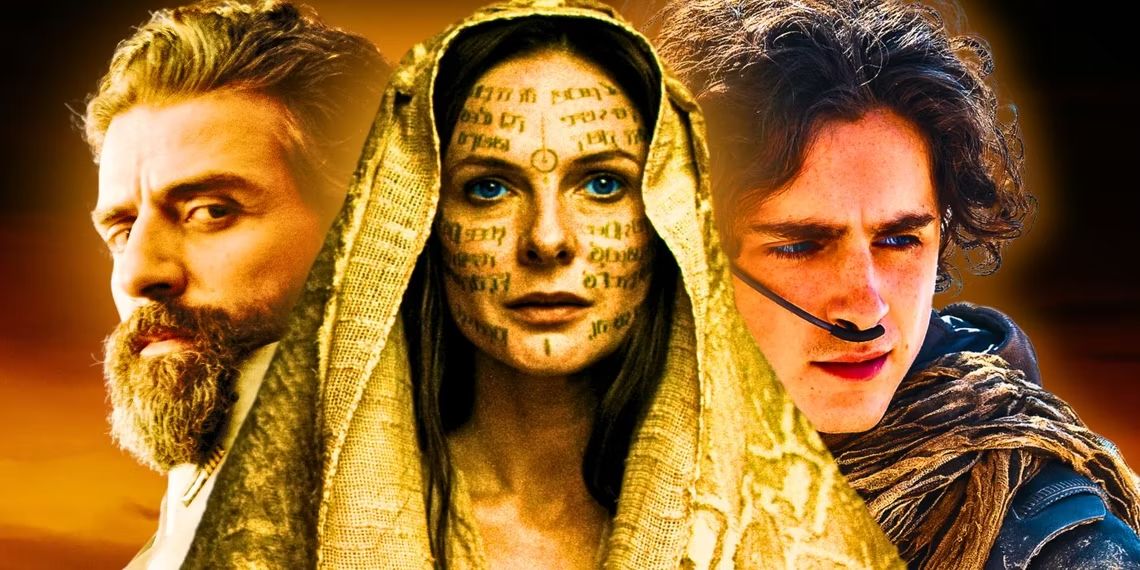
The Atreides/Harkonnen Family Tree Explained
As proven by Dune: Part Two’s twists and turns, the Atreides and Harkonnen family tree is complicated, but understanding the bloodlines is crucial.
4 The New Dune
The Honored Matres Destroy The Planet
The planet of Dune (technically named Arrakis) goes through several environmental transformations throughout the Dune series. Starting out as a barren, inhospitable world in the first novel and slowly becoming a verdant place filled with life, Arrakis suffers a drastic and violent change in book five, Heretics of Dune. In a failed attempt to rid the universe of Duncan Idaho (the clone of someone who was once a good friend to Paul and his devout servant/combat trainer), the Honored Matres destroy the planet of Arrakis.
Not only is this far into the
Dune
timeline, but it is also one of the most over-the-top and campy moments in the series.
This action turned the planet into a blasted plain where nothing could grow. The Bene Gesserit successfully escapes with the last remaining sandworm and transforms their homeworld of Chapterhouse into a new Dune. Not only is this far into the Dune timeline, but it is also one of the most over-the-top and campy moments in the series. It is also the destruction of the planet that the entire movie franchise has been built around.
3 The Honored Matres
The Group Practiced Control Through Sexual Assaults
Herbert’s later Dune novels are divisive among fans, with some readers claiming that he went over the edge with some of his bizarre concepts and at times perverse imagination. A perfect example is the all-female group known as the Honored Matres. Derived from an offshoot of the Bene Gesserit, this organization believed in obtaining total control over all others, and their main means of obtaining that hierarchy was through sexual enslavement.
During the two thousand years between God Emperor Leto Atreides II’s death and their arrival, the Honored Matres developed sexual intercourse into a form of narcotics, making men servants to their cause through addiction. A strange and perhaps out-of-date concept, it would be easy to see why filmmakers will avoid the Honored Matres in the future. It would also help eliminate the entire purpose of razing the planet since this was the group who ordered the destruction.
2 Duncan’s Return
Duncan Is Resurrected Countless Times In The Books
Clones exist in the Dune universe, although not in the way Star Wars depicts them. In Dune, the stalwart companion of Paul, Duncan Idaho, meets his unfortunate end fighting against a team of Harkonnen soldiers. Later, when Paul ascends to the throne as Emperor, Idaho returns, now a “ghola” created by the Bene Tleilax. Idaho is once again killed (this time by his wife and Paul’s sister, Alia), and he is once again reincarnated as a clone of himself.
This constant cloning will most likely not be included in future
Dune
sequels
Through the reign of Leto Atreides II as Emperor, Idaho returns time and time again to serve Leto. This constant cloning will most likely not be included in future Dune sequels because Jason Momoa (who portrays Idaho in Villeneuve Dune trilogy) will probably not want to play the same part for what could conceivably be a dozen more movies. However, the good news is that Duncan will return at least once in Dune 3, as his resurrection as a clone will happen in the movie — but don’t expect him to keep getting killed in the franchise.
1 The Butlerian Jihad
A Controversial Holy War Between Humanity And AI
It is currently unknown how much of the Dune expanded universe Warner Bros. is intending to include in their new cinematic franchise, but one piece of history in the books that will most likely not be included is the Butlerian Jihad. Mentioned only a handful of times in Frank Herbert’s original series (and then later expanded upon by Herbert’s son, Brian Herbert, and famed sci-fi writer Kevin J. Anderson), this conflict between artificial intelligence and mankind is much more action-packed than the rest of Dune.
For some longtime Dune fans, these stories just don’t feel like they fit in with the rest of Herbert’s world. This also doesn’t fit with what Denis Villeneuve is building with his Dune movies. There are action and war-like scenes, but his films and stories are much more cerebral. While the Butlerian Jihad could provide some amazing action, this isn’t something that will fit into the format of his science fiction world.
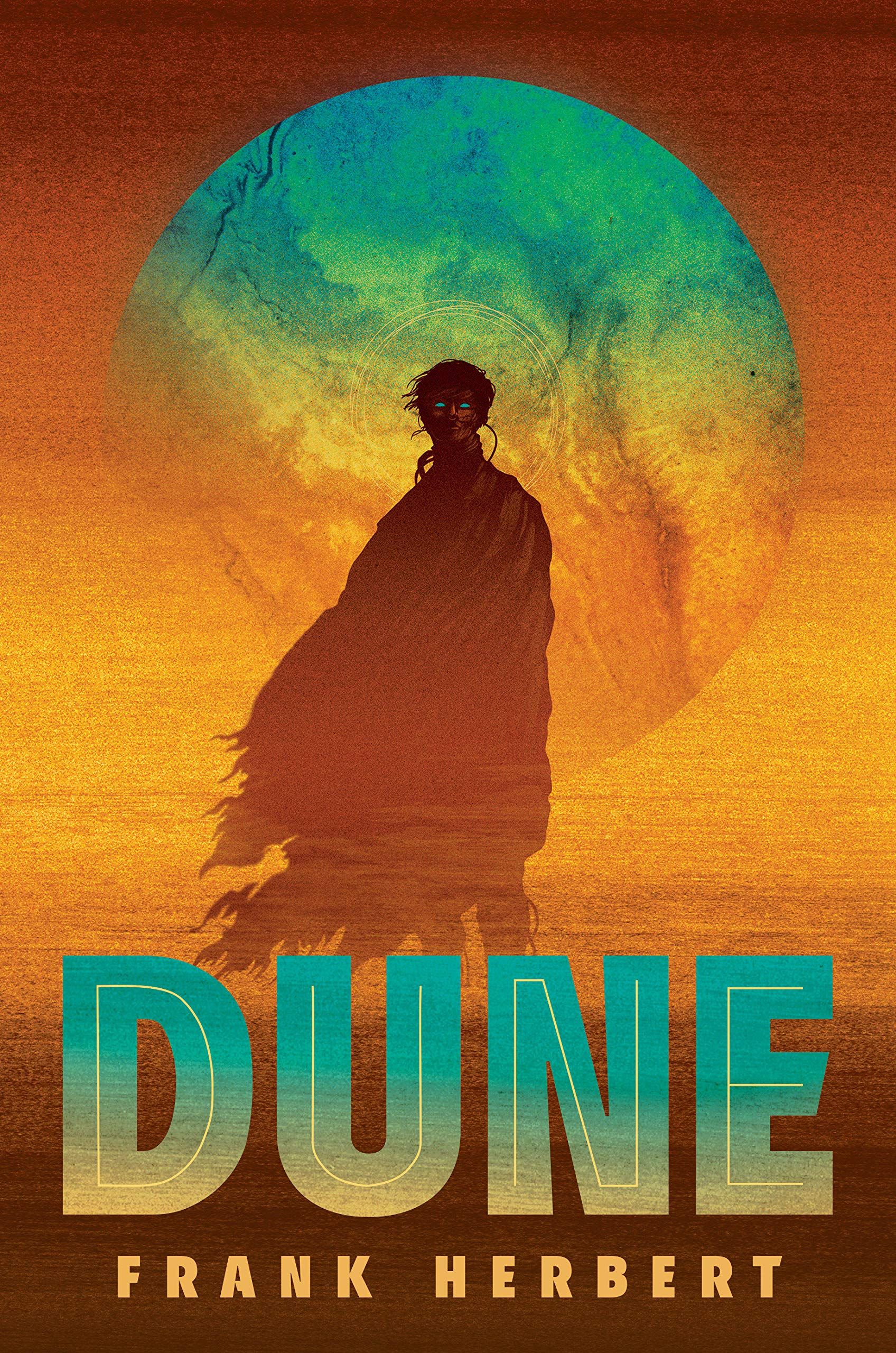
Dune
- Created by
- Frank Herbert
- Cast
- Kyle MacLachlan , Timothee Chalamet , Zendaya , Austin Butler , Javier Bardem , Rebecca Ferguson , Oscar Isaac , Jason Momoa , Stellan Skarsgård , Josh Brolin , Dave Bautista





